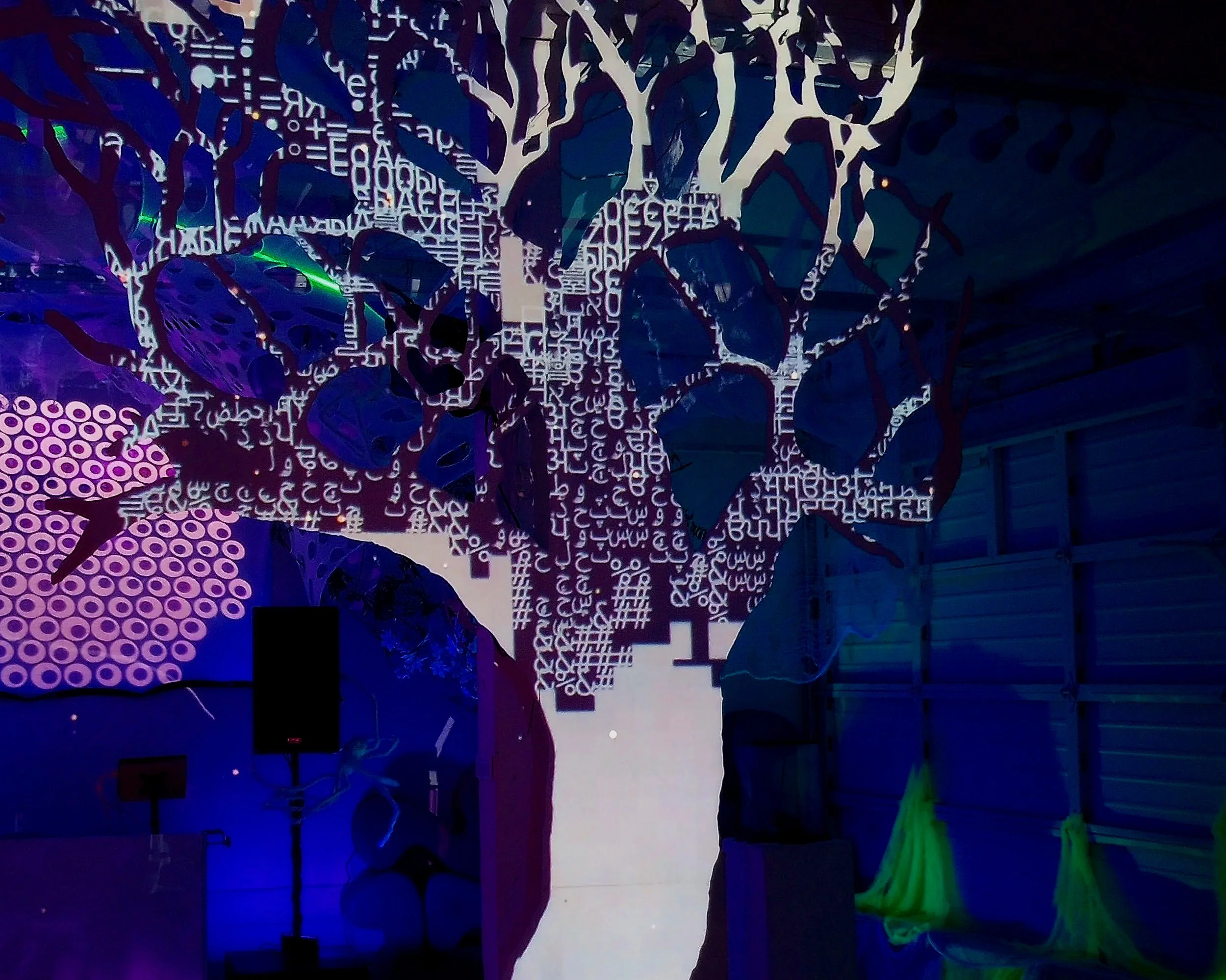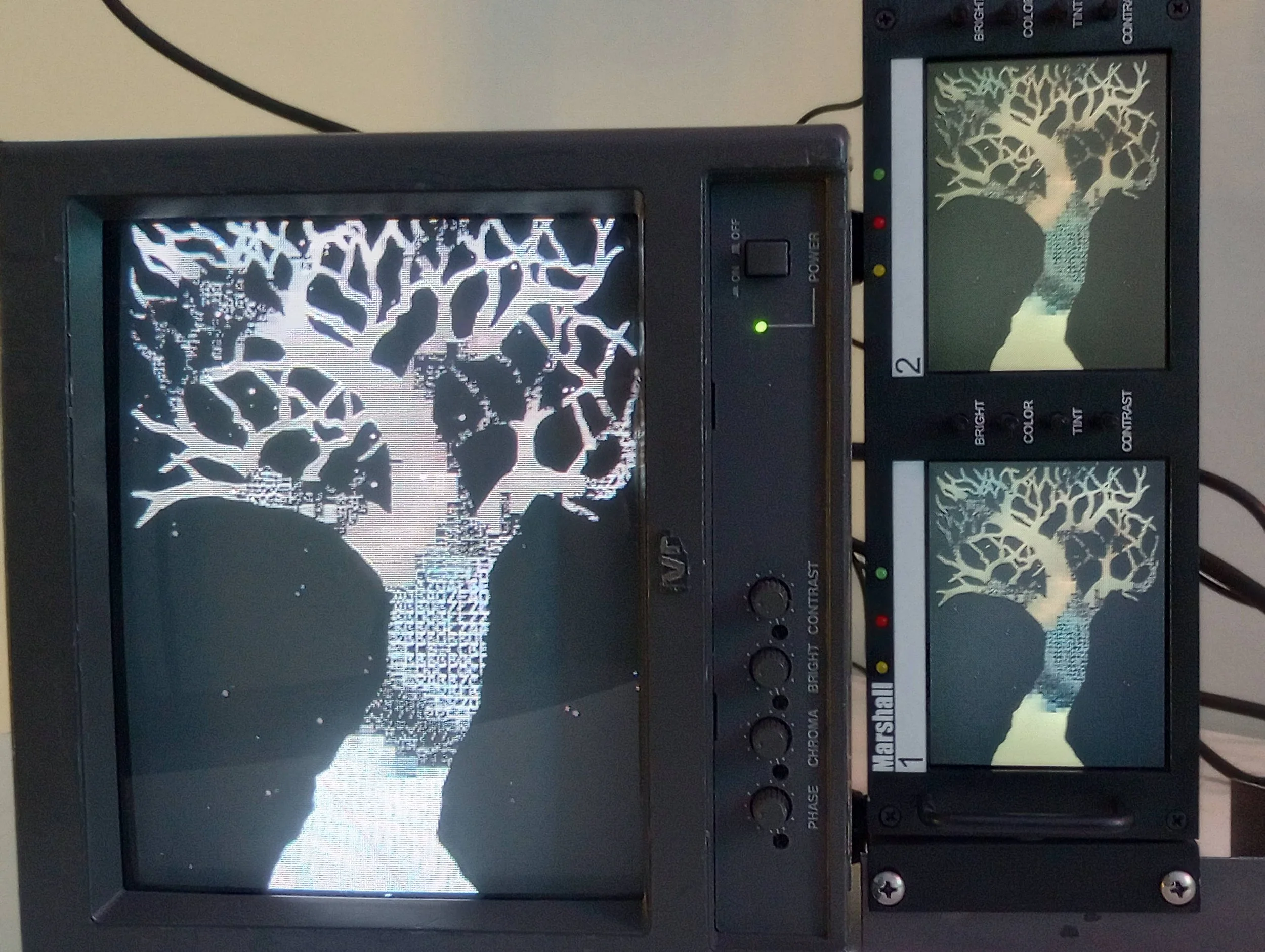Installation view as installed for Passable annual fundraiser, 2025
Alpha Tree (2025) is a screensaver-format loop created using Processing 4 and FFmpeg, by artist Aubrey Birdwell. Part of his ongoing Dead Channel series, it extends the artist's work exploring themes of language, erasure, and architectures of disappearance. In the 1984 novel Neuromancer, William Gibson compared the color of the sky to a television tuned to a “dead channel.” This image, vague and likely referring to television static, always clung to the artist’s imagination and served as the inspiration for generating these works. Through code, as well as new and obsolete display technologies, the series investigates language through saturation, repetitively overlaying linguistic fragments that swell until they overtake the screen. In Alpha Tree, archival public-domain footage of the 1946 Bikini Atoll nuclear tests is algorithmically translated into a living field of multilingual glyphs. A non-exhaustive selection of nineteen language sets is used, each contributing three unique characters from different regions.
The imagery of the mushroom cloud from the Bikini Atoll footage is aligned with a hand-drawn tree silhouette designed by artist Shelly Farnham of Seattle, WA, and was used with permission as a stencil for the animation. The contrast between the two images forms a composite between constructive and destructive forms. Throughout the animation, glyphs drift, collide, and fade along the tree’s body, creating a slow, recursive memorial that never resolves into a single language. Rendered using source code and exhibited as without commercial intent, Alpha Tree reimagines the screensaver as an elegy. The work reflects on language as a form of growth, an emergent ecology rising from digital ash, where traces of conflict feed new roots of collective voice.
Installation view as installed for Experimental Media Activation, Hometeam Gallery, 2025

